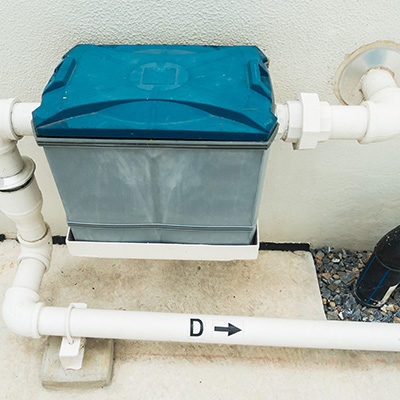Grease Traps
Avoid Spills by Pumping Regularly
In most municipalities, septic grease traps or grease interceptors are devices designed to stop grease, oil, wax, and other fatty-type debris from entering a public sewer system. Such greasy materials cause blockages and often result in messy backups or overflows. The traps are designed to keep these materials separate from the wastewater so they can be extracted before they enter the sewer system. These traps need to be pumped regularly to eliminate the build-up, and we provide grease trap pumping as one of our expert services.
Grease Trap Requirements
Often municipal building codes for restaurant and catering kitchens, school cafeterias, and other commercial cooking enterprises mandate the installation of grease interceptors to avoid environmental damage. There is also a flow capacity requirement (typically 30 minutes of the same flow time), depending on various factors. Any new or refurbished food preparation area must have a dedicated area for washing floor mats and equipment, contained with a berm to prevent wastewater from going into the storm drain system rather than going first through a grease trap. If a dedicated wash-down area is outdoors, the drains must be protected from rainwater. Any sink that will be exposed to grease must have one of these traps. Generally, they should be placed at least 10 feet from any hot water faucets to allow the water to cool to 120°F before it enters the grease trap. The trap’s size must also meet the standards of the Uniform Plumbing Code.

